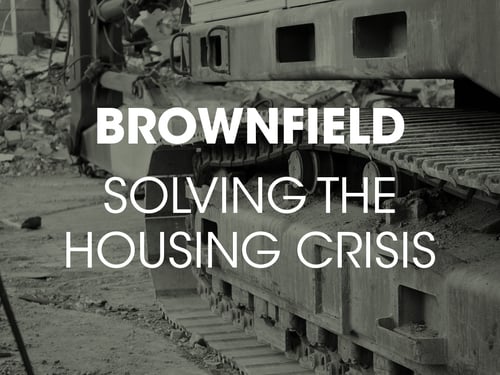These findings support the Campaign’s position that three of the next five years’ worth of Governmental housing targets could be met by only building homes on identified brownfield land. This would ease pressure on councils and allow them to hold onto their Greenfield land and not release it unnecessarily, helping to protect our countryside.
The analysis found that, the 17,656 sites identified by local planning authorities (covering over 28,000 hectares of land) would provide enough land for a minimum of 1,052,124 homes. This could easily rise to over 1.1 million once all resisters are published. This conforms to the Campaign to Protect Rural England’s initial predictions.
The advantage of brownfield land is that it is in urban areas which already have established infrastructure and these areas generally have a higher demand for housing. The areas of England identified as having the highest number of estimated, potential ‘deliverable’ homes include London (267,859 homes), the North West (160,785) and the South East (132,263).
“It’s fantastic news that local authorities have identified so many sites on brownfield land that are ready and waiting to be developed – and shown how wide of the mark the Government’s estimates of brownfield capacity have been. Contrary to what the Government, and other commentators have said, brownfield sites are also available in areas with high housing pressure. Indeed, our analysis is conservative with its estimates of potential number of homes that could be built – the figure could much higher if density is increased and if more registers looked at small sites.
The Government needs to get on with amending its guidance to make sure that councils identified all the available brownfield sites in their areas. They then need to improve incentives to build on these sites and ensure that they follow through on their commitment that all new-builds should be on brownfield first.”
Rebecca Pullinger, Planning Campaigner at the Campaign to Protect Rural England
Additional results found in the analysis showed that in areas where the Green Belt is being threatened with development, brownfield sites exist. In several of these areas, most specifically the North West, where the Green belt has been proposed for development in multiple places, brownfield land enough to satisfy 12 years of housing need has been identified.
It has been suggested by the Campaign to Protect Rural England (CPRE) that to make best use of all of this brownfield land the Government should take the opportunity presented by the upcoming review of the National Planning Policy Framework. They suggest a ‘brownfield first’ approach to land release and granting planning permissions for development. CPRE also suggested that local authorities should be empowered to refuse planning permission for greenfield sites when there are suitable alternatives on brownfield sites available in the area.
Download the State of Brownfield 2018 analysis here.
Interested in learning more about Brownfield land development? Check out our other article on this topic:
Building on Brownfield Land? Understand the Contamination Risks


Have your say